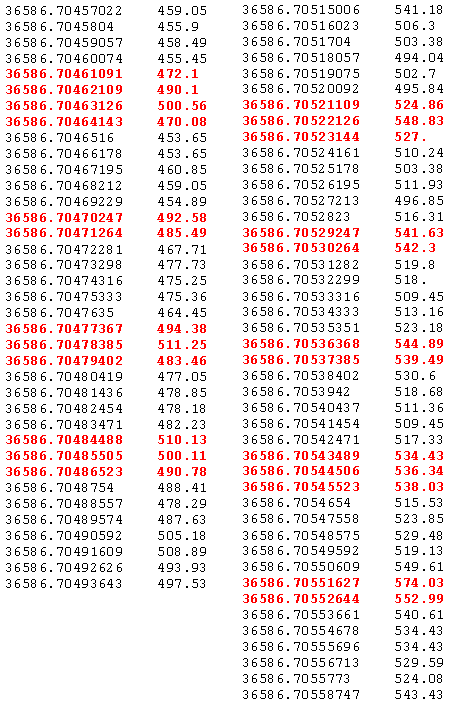Marty Davis
Well-Known Member
- Joined
- Sep 25, 2004
- Messages
- 2,445
I have been working on a revision to the Engine Analysis Software and have studied this EGT Trace a lot. What is shows is several laps of my 20 hydro while logging EGT in the fat part of the pipe during laps around the course. I have removed the data that occurred before I started lapping and that data after I completed lapping. The EGT value shown is red is the time that the boat is in the turns and shows an increase in EGT due to loading of the engine. The early laps are shown first and you will see that the EGT steadily climbed as the boat ran. I was leaning the mixture control as I ran laps in getting the mixture to a perfect setting.
As far as I know, this kind of data has never been presented openly. I decided to do this so that it would spur some activity with people studying building their own pipes. This should answer the question specifically as to the EGT while running on the course.
One note that is not apparent is that as the mixture control is leaned, the segments in the turns decrease. The speed of the boat has increased to the point that it is taking only 2 segments to get through the turn rather than 4.
Maybe someone will do a statistical analysis and discover even more information.
Hope that you enjoy this as much as I have.
Would be interested in comments or interpretation of the data.
Marty Davis

As far as I know, this kind of data has never been presented openly. I decided to do this so that it would spur some activity with people studying building their own pipes. This should answer the question specifically as to the EGT while running on the course.
One note that is not apparent is that as the mixture control is leaned, the segments in the turns decrease. The speed of the boat has increased to the point that it is taking only 2 segments to get through the turn rather than 4.
Maybe someone will do a statistical analysis and discover even more information.
Hope that you enjoy this as much as I have.
Would be interested in comments or interpretation of the data.
Marty Davis

Last edited by a moderator:




